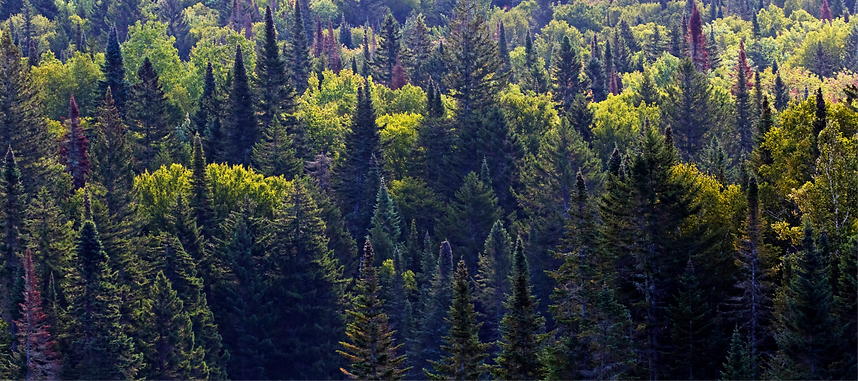A DIVERSE FOREST

Forest Diversity is the variety of all the different living organisms in a particular location, and their interactions with each other. It includes both flora (plant life) and fauna (animal life) as well as microorganisms, and how they relate to each other and their environment. Forests, which are among the most diverse ecosystems on the planet, are also the home of most wildlife species. The components of forests such as trees, plants, insects, birds, and animals all interact through consumption, pollination, and seed dispersal. A diverse mix of trees in an area supports a diverse mix of plant life, as well as insects, birds and mammals that depend on those trees. Biodiversity is critical for the stability of ecosystems, resilience to pests and other disturbances, soil fertility and climate regulation.

SO MANY OPTIONS
When it comes to planting trees, the options are abundant. Many people have a favorite tree and love to plant numerous specimens of the same species in one area. While this might seem appealing, it’s important to avoid creating a monoculture, which is a large area dominated by a single tree species. Monocultures are less resilient to pests and other disturbances, and they lack the biodiversity that various creatures in the forest need. Plant a variety of native Minnesota tree seedlings for your planting projects, to help create diverse, healthy forests. A diverse forest is a beautiful forest!

RISILIENCE
Diversity in the forest creates resilience, which measures the forest’s ability to adapt to a range of stressors. This means that if one tree species is lost due to a pest or other disturbance, another tree species can fill its “role” in the ecosystem. The greater the number of species in an area, the higher the chance that they can adapt to changes in their environment. For instance, the emerald ash borer has devastated ash tree populations in North America. In areas where other tree species were also present, the overall forest ecosystem has been better able to withstand the loss of the ash trees. Maximize the resilience of your forests by eradicating invasive plants to reduce the stress on the forest, and by planting a diverse mix of tree species appropriate to the location.

MIX IT UP
MIX IT UP




MIX IT UP
By creating a mix of species in an area, the integrity of the forest is preserved due to the diversity of strengths. A variety of tree species not only benefits wildlife by providing a mix of shelter and food sources but also enhances the forest's overall resilience to pests, diseases, and climate change. Diverse forests support a greater range of insects, which in turn support a wider variety of bird species, fostering intricate food webs and ecological relationships. Additionally, diverse forests help contribute to richer, more balanced soil, by supporting a variety of microorganisms. Biodiversity also helps maintain ecosystem functions such as water filtration, carbon sequestration, and oxygen production, thereby playing a critical role in mitigating climate change.
TREES ABSORB CARBON



Trees play a crucial role in absorbing carbon from the atmosphere, helping to mitigate climate change. The loss of trees directly diminishes a forest's carbon absorption capacity. Furthermore, a lack of biodiversity can reduce the remaining trees' ability to sequester carbon. Diverse forests support a variety of plant life, which enhances carbon sequestration. Studies have shown that mixed-species forests can store up to 70% more carbon than monoculture plantations. By planting a mix of species, forests become more productive and can store more carbon than those lacking in diversity.
Given the challenges posed by climate change, pests such as the spruce budworm in Minnesota, and emerald ash borer, and then wildfire, planting a diverse mix of species helps ensure the longevity and health of a forest, because a mix of species of native tree seedlings can withstand disturbances better than a stand of a single species of trees.

PLANT TODAY. FOR TOMORROW.

VARIETY

SUSTAINABILITY





